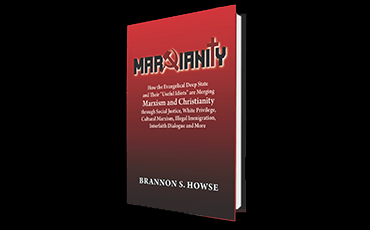The year was 1950, and evangelicalism was at a crossroads. For the previous 50 years evangelicals had fought to create an identity. Having separated from the main-line denominations, evangelicals now were an mish-mashed group lacking identity. The former generation of evangelicals was tired, having fought battles for the purity and proliferation of the movement. Feeling that the gospel's integrity was at stake, they had worked to raise up a younger generation of like-minded evangelicals.
This new generation realized that their movement lacked identity. They also noticed that the previous generation had fought battles, some of which appeared to be little more than shadow-boxing as the former enemies had receded for the time being. As this new generation looked across the evangelical landscape, they saw a blank canvass. This new generation labored to create an identity for their group. Ian Murray, in Evangelicalism Divided, shows the struggles that ensued during the battle for the identity of this second generation.
This is one of those books that every American Christian needs to read. In fact, I bet many readers of our blog have already read it, and the rest probably own it. If you have not cracked it, then dust it off and break it out. Before I moved to Viriginia, the elders at Grace Church spent much of the year reading this book together. It was stunning how much of Murray's details related directly to present controversy in evangelicalism.
As the title makes clear, Murray feels that the present state of evangelicalism is divided. One wing of it has stood for orthodoxy and biblical doctrine. This wing identifies itself with the martyred reformers who shed their blood at the hands of the Roman church. These evangelicals view themselves as standing for the integrity of the gospel. They have learned from the battles of the previous generation, and have made attempts to separate from the liberal denominations in order to avoid the fights that consumed their predecessors. Yet this new generation would rather die than oversee the compromising of the gospel under their watch.
The other branch of evangelicalism has dedicated itself to gaining recognition for the movement as a whole. Rather than fighting the battles over orthodoxy, these evangelicals fight for scholastic recognition, the expansion of their message through crusades, and the unification of the world-wide Christian church.
Murray makes clear that the goals of the two branches are mutually exclusive. Success in one camp invariably means defeat in the other. The gospel cannot be defended from liberal encroachments and at the same time be recognized as academically profitable by those same liberals.
Murray is obviously not a neutral historian. Rather, he finds himself squarely in the first camp. He would be willing to die rather than see the gospel compromised. However, Murray also cunningly reveals that no one is willing to kill him; rather his opponents are trying to drag him and his gospel into unholy alliances with those who do not uphold it.
 This book is Murray's attempt to show how evangelicalism transitioned from the promising dawn seen by the second generation into the divided camps that exist today. He does this by tracing the motives of the main players. He shows how their thoughts progressed during the last 50 years. One of the strengths of the book is how Murray describes the personal relationships that existed between evangelicals during this time period, and how in many cases those relationships influenced the progression of thought and motives of the main players. Two opposite examples: Billy Graham was influenced by his father-in-law to labor on the same side as the denominations; D. Martyn Lloyd-Jones's resolve was tried and strengthened through the friendship with and separation from J. I. Packer, once his student. In both of these examples, Murray delicately and carefully shows the development and effects of the relationships. In the case of Lloyd-Jones, Murray shows the pain and conflict brought about by the eventual separation of the teacher from the student. This brief section (108-111) is a good brief section to read to get a feel for the theme and tone of the book.
This book is Murray's attempt to show how evangelicalism transitioned from the promising dawn seen by the second generation into the divided camps that exist today. He does this by tracing the motives of the main players. He shows how their thoughts progressed during the last 50 years. One of the strengths of the book is how Murray describes the personal relationships that existed between evangelicals during this time period, and how in many cases those relationships influenced the progression of thought and motives of the main players. Two opposite examples: Billy Graham was influenced by his father-in-law to labor on the same side as the denominations; D. Martyn Lloyd-Jones's resolve was tried and strengthened through the friendship with and separation from J. I. Packer, once his student. In both of these examples, Murray delicately and carefully shows the development and effects of the relationships. In the case of Lloyd-Jones, Murray shows the pain and conflict brought about by the eventual separation of the teacher from the student. This brief section (108-111) is a good brief section to read to get a feel for the theme and tone of the book.
Murray seems to have two main purposes in writing this book. First, he aims to show that the bursting of the evangelical dyke began in England; from there the river of division and compromise flowed across the Atlantic, changing its tack at Park Street Church in Boston, then across the United States it flowed and crested at Fuller Seminary in Los Angeles. Second, he aims to show that those who wanted recognition, academic integrity, and unity in the world-wide body of Christ were in error, and are primarily responsible for the current division in evangelicalism.
This book does a convincing job of showing that there is a difference between true Christianity and unity with liberal denominations. These differences cannot be reconciled (this is most clearly shown on p. 150). Murray also does an excellent job of avoiding the veneer neutrality. From the opening pages of Evangelicalism Divided, the reader clearly understands that Murray laments the compromises prevalent in arms of evangelicalism. He clearly states his views (cf. 51) and then carefully reasons from his views to his conclusion. His chapters are well ordered, and in their arrangement they give weight to Murray's thesis. Moreover, Murray paints a detailed picture of the emotions and motives that birthed compromise. For example, he describes the ring that Archbishop Ramsey was wearing when he emerged from his meeting with Pope Paul VI. Murray appeals to scripture throughout the book. While he avoids exegesis, he does use scripture plainly and simply in order to show that he is in the right.
Throughout the entire book, Murray avoids notes of desperation or despair. He firmly believes that the final victory will be had for the true church. While this is plainly stated as one of his conclusions (271), the careful reader will see this note of hope reverberating in the background of every chapter. Unlike Joel Carpenter's book, Revive us Again, this book is aimed at evangelicals. Murray's use of scripture, his acceptance of the basic presuppositions of the evangelical movement, and his acceptance of the supernatural power of the gospel are all ingredients that the non-evangelical reader is allergic to. This book is aimed at the evangelical who accepts the scripture and the gospel as being both supernatural and true. For this reason, it seems that the book has a more subtle goal that the two earlier discussed. This book could be used in an attempt to persuade the average evangelical in the pew of the dangers of compromise. While this tract-like goal remains unstated, the polemic but careful style indicates that this was on Murray's mind while writing.
If there is a weakness of the book, it is perhaps found in attributing too much to the likes of people like Lloyd-Jones and Graham. This book describes both of them as the key players in the division of evangelicalism. While others were obviously involved in both branches of the division (and on both sides of the ocean), Murray chooses to focus on the evolution and crystallization of thought in these two as indicative of their forks of the divided evangelical river. However, I'm not sure if enough weight was given to the idea that Graham was more a product of a generation ready for compromise than the author of that compromise. Was Graham to blame for the compromises and division in evangelicals? Or, were the drops of compromise already in the water? Did Graham emerge as a product of his generation rather than the leader of it? If Graham would have held fast to his separatist roots, would not the river have thrust another to the front of the movement? Murray does not say.
This book is a carefully reasoned and thorough examination of the division that emerged in evangelicalism in its second generation. By showing personal decisions, allowing the reader to see the causes, effects and details of those decisions Murray charts how the river of evangelicalism became divided. He shows where it overflowed its banks and burst its dyke. His two main aims (showing how the river divided, and showing which side is in the wrong) were both successful and convincing.
If you have already read this book, tomorrow I'll give you another one about the same era that you probably have not read.
Support Our Broadcast Network
Trending Stories
Latest
We're a 100% Listener Supported Network
3 Simple Ways to Support WVW Foundation
Make Monthly Donations
-or-
A One-Time Donation
-
Mail In Your Donation
Worldview Weekend Foundation
PO BOX 1690
Collierville, TN, 38027 USA -
Donate by Phone
901-825-0652

















